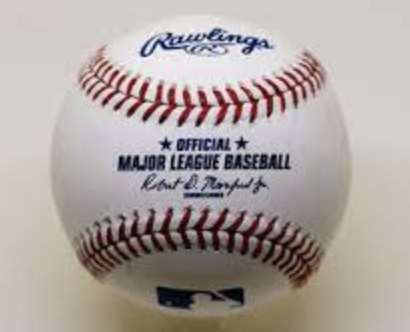MLB to introduce some significant rule changes for upcoming season

Stay tuned to see some of the major rule changes the MLB is making for 2023
October 5, 2022
Looming in the midst of a fun playoff race, the MLB confirmed new rules that will be in effect starting in the 2023 season. The three new rules involve using larger bases, implementing a pitch clock, and limiting the shift. The three changes are listed in order from what is projected to be least impactful to most impactful regarding the change of play next year, along with explanations of what the previous rule was, what the new rule entails, and how it may impact the game.
First, MLB decided to make the bases larger. This only applies to first, second and third base (home plate will not be affected). The basic purpose behind this change is to keep the players safer. This will help players stay in the baseline, especially down the first baseline.
There is a specific play that this will affect. If the batter bunts while swinging, then the catcher must throw to first. This can be a difficult play, because, sometimes, the runner blocks the first baseman and the catcher throws the ball into the runner. Making the bases larger gives the runner a larger lane in which they can run. This could encourage stealing, because the base is larger, and that makes it harder for a second baseman to block it. This rule does not change the game that much and increases the player’s safety.
Second, the pitch clock will be added to Major League games. Currently in MLB, the pitcher can take as much time as he wants in between pitches. Some pitchers are quick, and some take longer. This depends on their pitch repertoire and their pace of play. The pitch clock is a timer set between each pitch. They will have 15 seconds to throw a pitch when no one is on base and 20 seconds to throw if there is a runner on base.
If a pitcher does not throw a pitch in time, an automatic ball is called in the count. This rule was made to speed up the pace of the game. Testing has proven that this new rule will cut off about a half an hour of game time where there is no action. This can significantly improve the watchability of baseball.
The goal is to get more youth to watch the game, and MLB thinks that shortening the games will do that. The pitch clock has been tested out in the Minor Leagues, and people have said that, after a while, no one even notices it. People are predicting that, at the beginning of next season, some pitchers will be penalized for taking too much time, but, by the end of the season, most pitchers will have adapted to it.
Finally, MLB is banning the shift. “The shift” refers to using analytics and math to determine where the hitter is most likely to hit the ball. With this information, you can place your fielders wherever the user wants. If they want to put their third baseman in shallow right field, then they can.
The Dodgers ran a play where they moved all their infielders to the right side of second base and put one of their outfielders there as well. They had four men playing to the right of second base and only two outfielders. Any combination of positions are possible, if the manager thinks it will give him an advantage.
Under the new rule, MLB will limit the shift by creating rules to regulate it. With the new rules, the shortstop and third baseman must be to the left of second base, and the first and second baseman must be to the right of second base. Also, infielders cannot have their feet on outfield grass before a pitch is thrown.
This rule will make it easier for batters to get hits, because it will limit the fielder’s advantage. The shift made it harder for left-handed players to get ground ball hits, so those will increase. New York Mets star shortstop, Francisco Lindor, says that he loves the change. He thinks this will force middle infielders to make amazing plays. Instead of having the ball hit right to them, they will have to show off their glove and make a play.
MLB may be changing the rules of baseball for next year, but it is still the same old baseball game. If some of these rules do not have the intended consequences, then they can always overrule them. MLB has tested these rules in the Minor Leagues, but sometimes a different outcome can happen in the Majors. Fans will have to wait and see if these rules stand the test of time.


